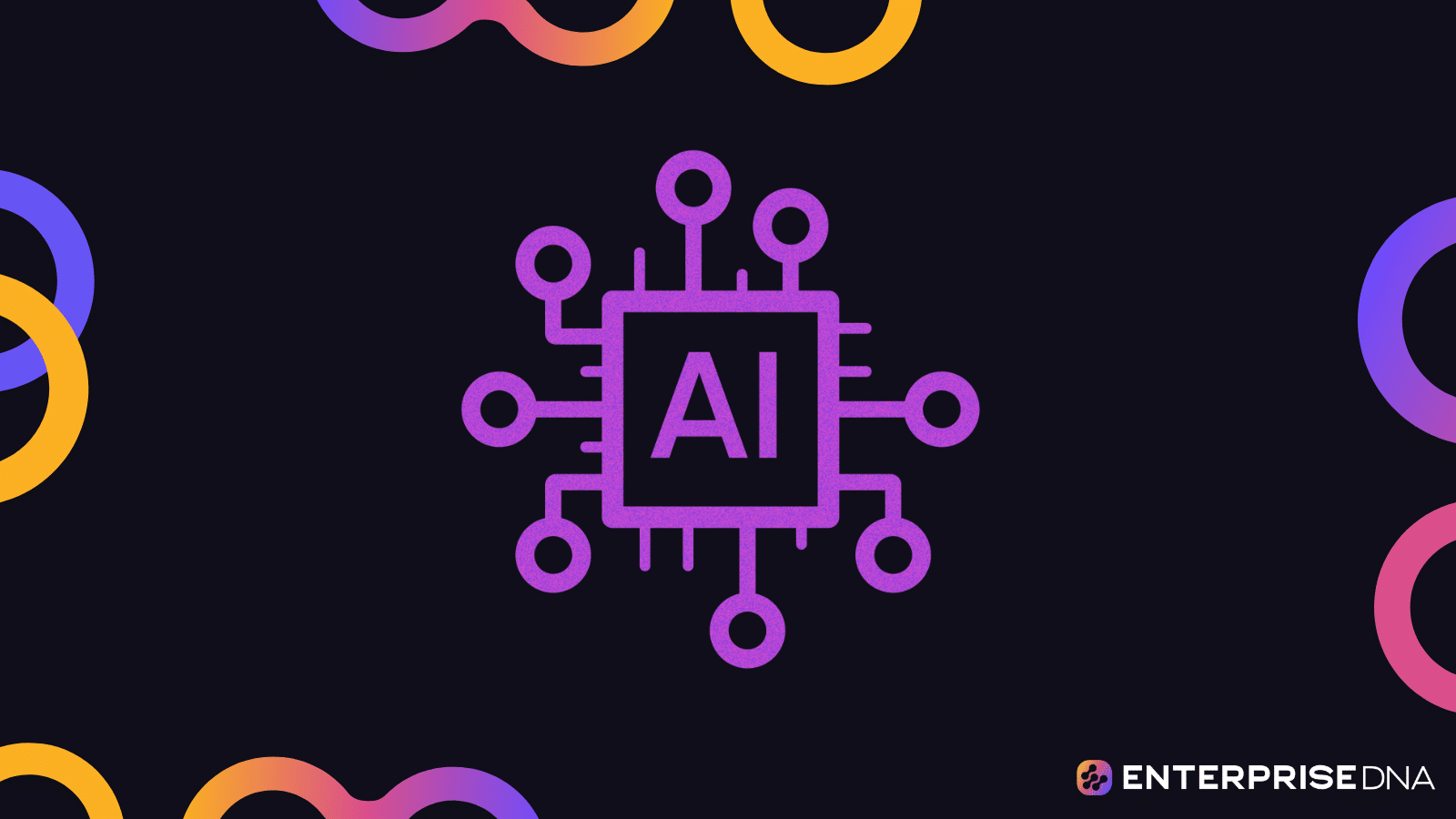Are you ready to revolutionize how you write code by breaking down language barriers?
Introducing the Code Language Translators.
A code language translator integrates advanced machine learning algorithms and natural language processing techniques. This offers a refined method for translating scripts and algorithms from one language to another.
In this article, we’ll explore how Code Translators empower you to unlock new possibilities.
Say goodbye to manual conversion and hello to a seamless development process.
Let’s dive into this revolutionary technology!
Overview of Code Translation Tools

In the software development industry, text-to-code generators are rapidly gaining popularity as indispensable tools for streamlining the process of writing code.
Their capacity to seamlessly switch between programming languages makes them incredibly versatile, while significantly enhancing efficiency.
Different translator types exist, each with a unique purpose:
Binary Code Translator: Converts binary code (0/1) into a more understandable form or vice versa, aiding in low-level coding and debugging.
Source-to-Source Compiler: Translates code from one programming language to another, facilitating cross-language software development and legacy code migration.
Compile and Interpret: Regular compilers translate high-level code into binary, while interpreters execute the code line-by-line, translating on the fly.
AI Code Translator: Utilizes artificial intelligence to translate code between languages. It’s adept at understanding context and nuances, making it a powerful tool for complex coding tasks.
These tools can help you work with different frameworks or languages by converting code from one format to another while preserving the structure and functionality.
let’s take a look at how to translate code with AI.
How to Translate Code Using a Code Generator
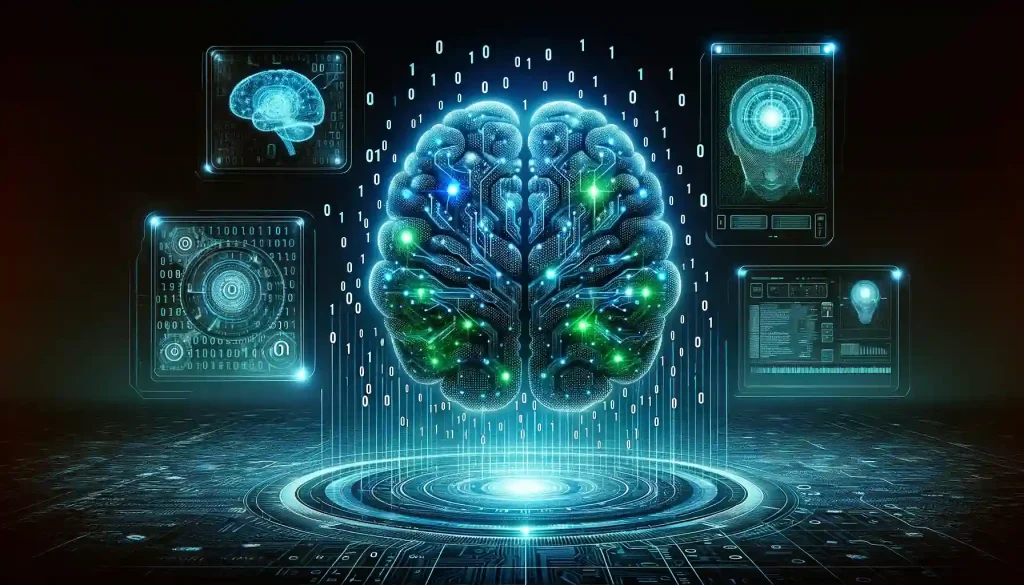
Code translators like the EnterpriseDNA Code Generator can help you convert natural language into code. We’ll walk you through translating code into various languages.
Let’s explore some different use cases:
Example 1: Python to Java- Array Sorting
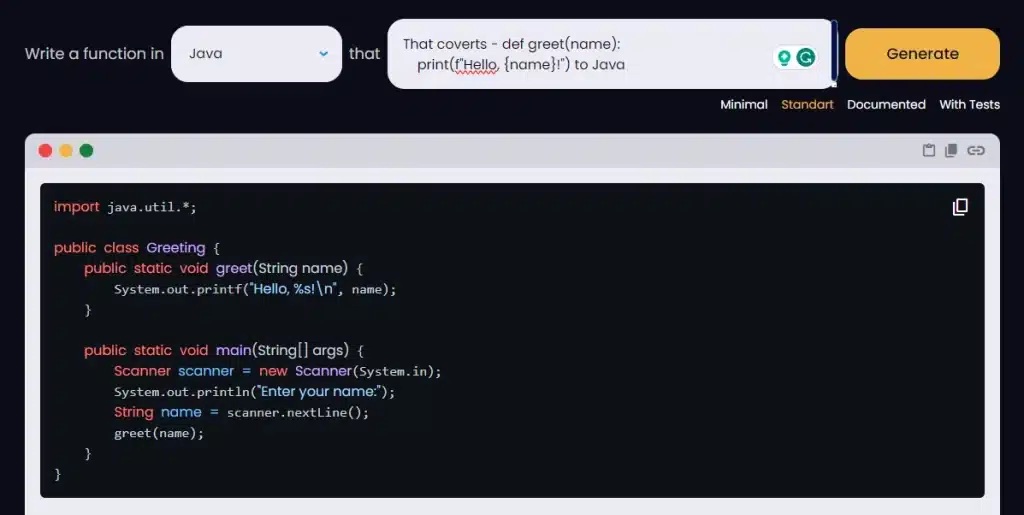
Let’s say you have a Python function that takes an array and returns it sorted in ascending order. You want to know what that would look like in Java.
Just copy and paste your Python code into the EnterpriseDNA Code Generator, select the target language, and hit the “Generate” button.
Then you’ll see the same function written in Java! It’s that easy.
Now, let’s take a look at converting C++ to Python.
Example 2: C++ to Python – Fibonacci Sequence Generator
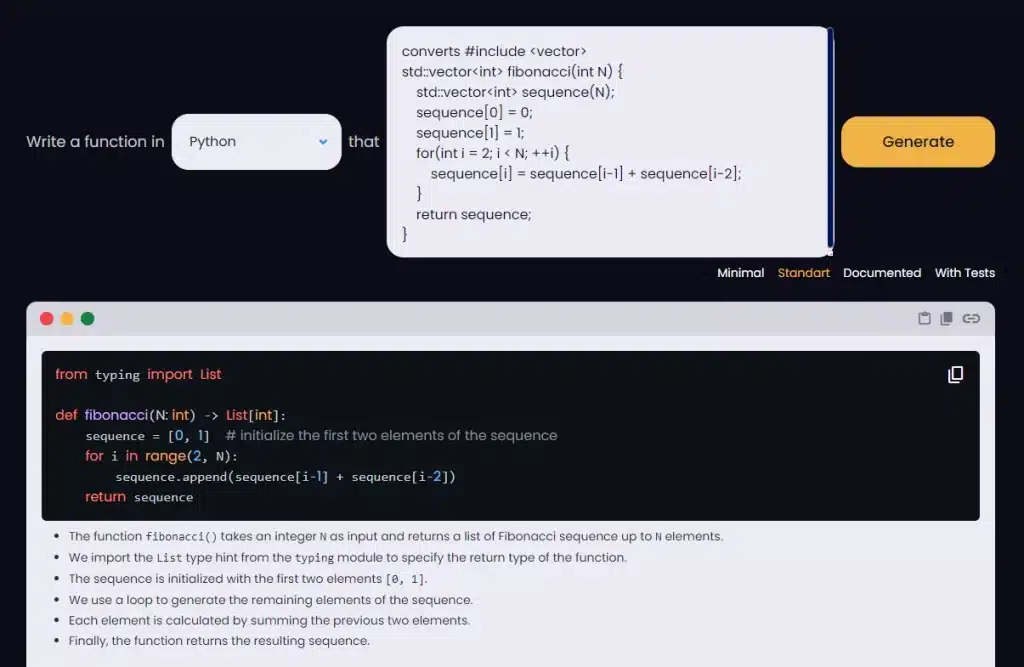
Or, imagine you have a C++ function that computes the first N numbers of the Fibonacci sequence using recursion.
Curious about how it would look in Python?
Simply input your C++ code, select Python as the target language, and click “Generate”.
Now, you’ll see your function transformed into Python, offering a clear comparison of the two languages’ syntax and recursion handling.
Okay, let’s check out how to translate Java to C#.
Example 3: Java to C# – Basic Calculator

With the EnterpriseDNA Code Generator, you can easily transform a Java class with basic arithmetic operation methods like addition, subtraction, multiplication, and division into its equivalent in C#.
All you need to do is input the code, select C# as the target language, and hit the “Generate” button. The result will be a C# class that reproduces the structure and functionality of your original class.
Moving on, let’s examine how to translate a ruby script.
Example 4: Convert a Ruby Program to Java
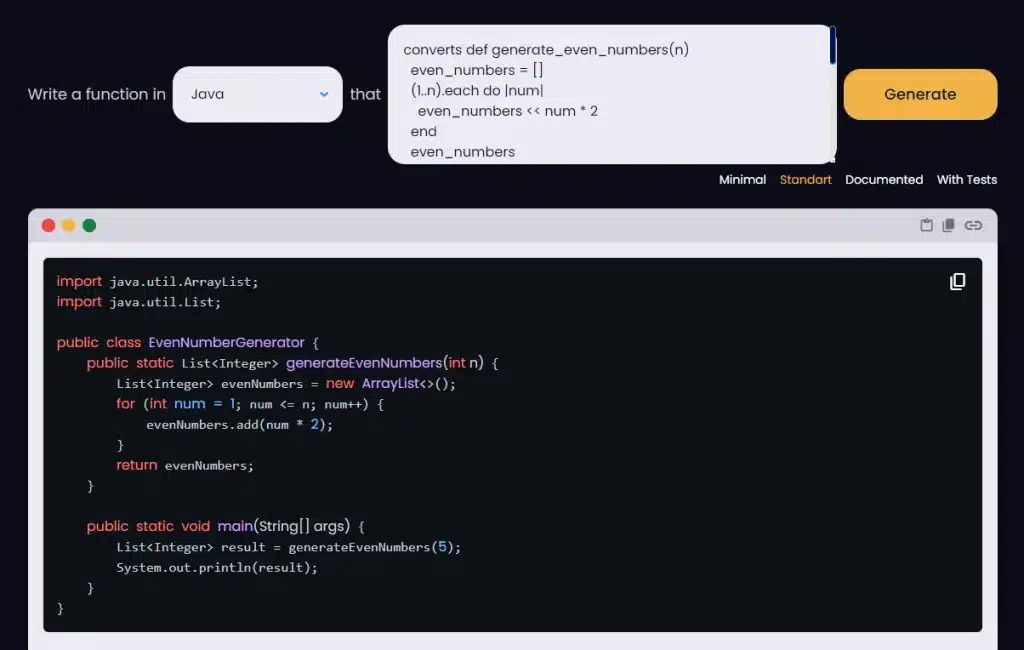
Would you like to compare how a Ruby program generating even numbers is handled in Java?
Simply input your Ruby code into the Code Generator, choose Java as the target language, and click “Generate”.
The output will be a Java version of your original code, allowing you to directly compare the two languages’ approaches to list generation and number handling.
Alright, for the final example, we’ll translate Ruby code to C#.
Example 5: Convert a Ruby program to C#
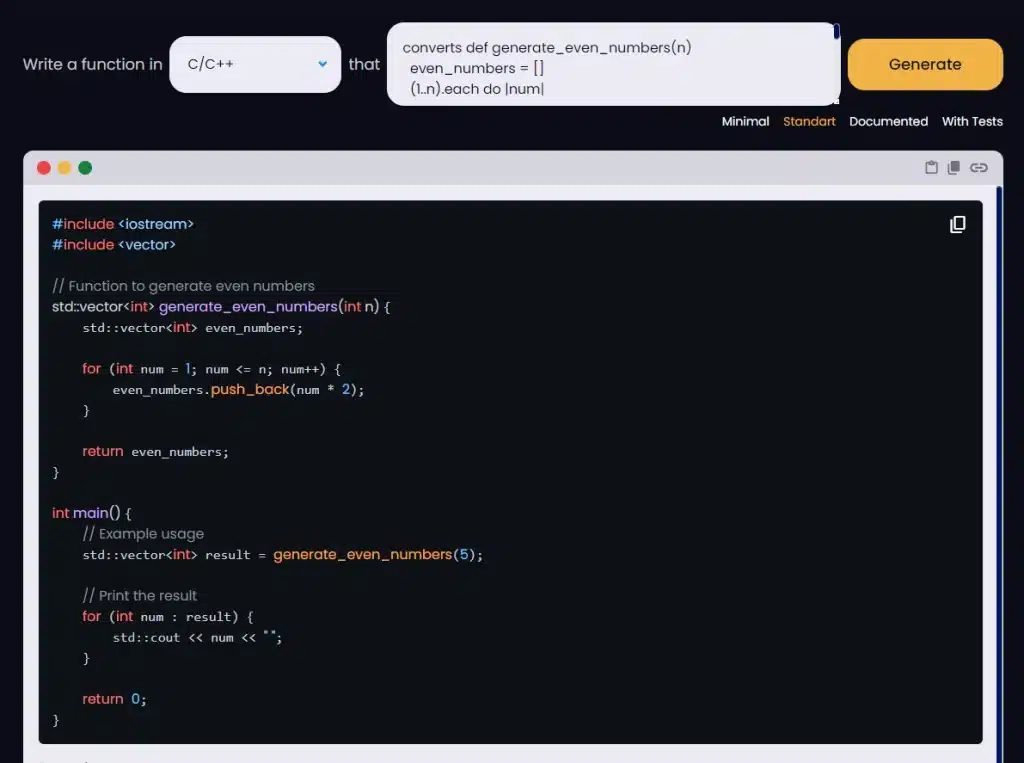
If you’re curious about how a Ruby script generating even numbers would be written in C#, simply input your Ruby code, and choose C# as the target language.
Then, click “Generate” to see the output: a C# version of your Ruby code.
After going through those examples, it’s time to delve further into the translation process.
4 Step Translation Process Explained
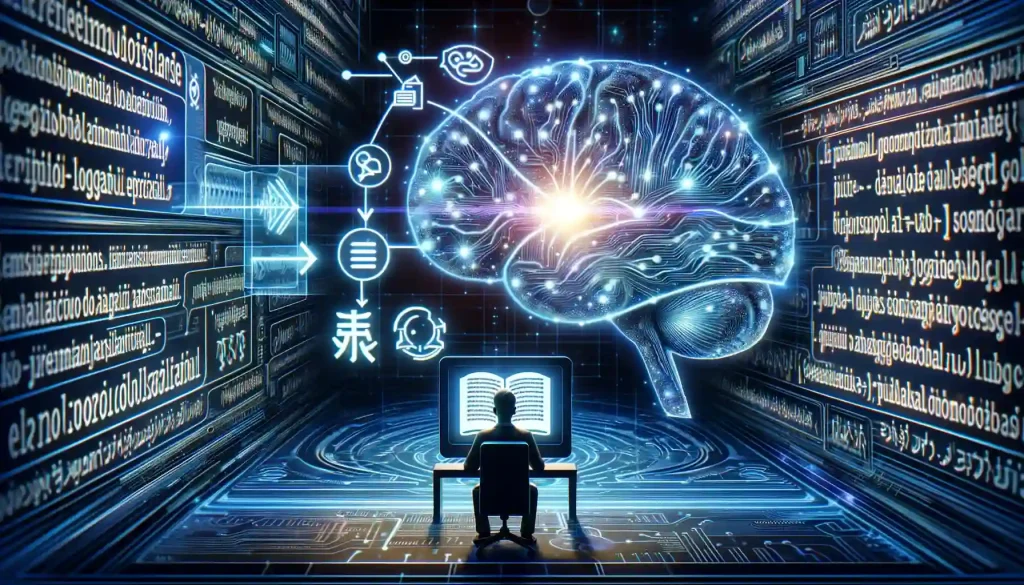
The translation process involves several steps:
Lexical Analysis: Breaking down code into tokens.
Syntax Analysis: Checking code structure against language rules.
Semantic Analysis: Ensuring logical sense of commands.
Code Generation: Convert to machine code.
Challenges and Future Directions
Despite their utility, code translators face challenges such as maintaining code efficiency and handling language-specific features.
Future advances may see AI-driven translators providing more accurate and efficient translations, further bridging the gap between human thought and machine execution.
Finally, let’s reflect on some of the main points.
Final Thoughts

Code Language Translators are vital tools that aim to break down barriers in programming. This technology provides efficient translation capabilities between various languages, enhancing productivity while reducing errors when converting code.
Despite potential challenges, future advancements may lead to AI-driven translators offering more accurate and efficient conversions, further narrowing the gap between human thought and machine execution.
Furthermore, the evolution of Code Language Translators continues to reshape computing’s efficiency and capability.
So what are you waiting for? Start incorporating these tools into your workflow today!
Wanna learn more about the EnterpriseDNA code mentor? Check out the channel on YouTube for some more great AI-related content:
Frequently Asked Questions
How Does a Binary Converter Work?
A binary converter is a tool or software that translates binary code (composed of 0s and 1s) into a human-readable format, such as text or numbers, and vice versa.
It operates by mapping binary sequences to corresponding characters or values based on predefined rules or encoding standards.
Can Binary Translation Convert Binary to Other Programming Languages?
Binary translation usually refers to the conversion between binary code and human-readable forms like text or numbers.
What is the Role of a Computer Language in Binary Translation?
A computer language, such as C++ or Python, serves as the intermediary between human instructions and machine code.
How is Binary Code Translated for Different Computer Programs?
Each program may have unique requirements and structures, which dictate how the binary code is interpreted and executed.
Is Binary Translation Essential for Programming?
Binary translation is a crucial aspect of programming, especially when it comes to understanding how high-level code is executed at the machine level or for tasks like debugging and code optimization.
What Happens to the Resulting Code After Binary Translation?
After binary translation, the resulting code can be executed by a computer, analyzed for debugging purposes, or used in various applications that require an understanding of the binary representations of data or instructions.
What is an AI Code Language Translator?
An AI Code Language Translator is a software tool that uses artificial intelligence, particularly machine learning algorithms and natural language processing (NLP) techniques, to translate code written in one programming language into another.
How does an AI Code Translator differ from traditional code translators?
Unlike traditional code translators that rely on fixed rules for translating, AI Code Translators understand context and nuances in different programming languages.
They adapt to various coding styles and can handle complex translations with more accuracy, thanks to their AI-driven algorithms.
Are there any limitations to AI Code Translators?
Yes, AI Code Translators might struggle with extremely rare or outdated programming languages and very intricate or unconventional code structures. They are also limited by the quality and diversity of the training data they have been exposed to

